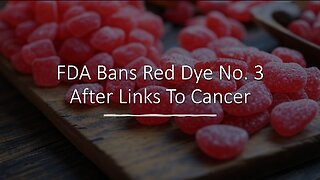Premium Only Content

You're The Cure, November 25, 2019 - Dr. Ben Edwards and Thomas Cowan, MD
Today, Dr. Ben interviews Dr. Thomas Cowan to visit about his new book that just came out, “Cancer and the New Biology of Water”. Dr. Ben begins the show with a quote from Dr. Cowan’s book that shows how fundamentally antagonistic doctors are today to truly treat disease. Dr. Cowan responds to that quote in explaining how this is a thought process brought on by a belief formed centuries ago that matter is all that exists. When you look at what makes up matter, you find that matter isn’t really all there is. Ironically, the bulk of matter is actually empty space. As long as doctors are focused on the ‘stuff’, they will continue to get poor outcomes. Dr. Cowan gives a little background on why he wrote the book and describes the cause of cancer, how poor the outcomes of treatments are, and explains why. The problem isn’t in the nucleus; it’s in the cytoplasm. He likens it to looking for your keys under the street light (because the light is better) when you actually lost them in the bushes. Dr. Cowan touches on his thoughts on the brca gene. Studies show that the prognosis is basically equal for people who have it as people who don’t have it. The problem isn’t actually the gene at all. Again, it’s the cytoplasm. After the break, Dr. Cowan discusses the 4th stage of water, structured water. He goes on to explain how all of the things we classify as ‘disease’, including cancer, is actually a problem with the structure and integrity of the water in the cell. Cells have a charge around them that help them repel each other and keep their distance. When the water in the cell is messed up, the cell loses it’s charge, allowing several cells to pile upon each other, without distance. Many things can change this gel-like water, including food, environment, and even thoughts. Dr. Cowan delves deep in exactly how this happens. He finishes the show by describing how a few different modalities that people do work in re-structuring the water in the cell.
-
 1:02:22
1:02:22
Veritas Medical
1 year agoYou're The Cure, September 25, 2023
152 -
 4:10
4:10
PerpetualHealthCo
16 hours agoFDA Bans Red Dye No.3
1.02K -
 59:57
59:57
Trumpet Daily
19 hours ago $3.45 earnedRemembering Herbert W. Armstrong - Trumpet Daily | Jan. 16, 2025
3.88K6 -
 26:07
26:07
The Lou Holtz Show
12 hours agoThe Lou Holtz Show S 2 Ep 1 | Tony Rice on Championship Leadership and Notre Dame Legacy #podcast
1.35K -
 53:37
53:37
Weberz Way
12 hours agoGOODBYE JOE, TRUMPS CABINET, LA FIRES, & KEEP TIKTOK
1.46K -
 3:07:17
3:07:17
Alex Zedra
9 hours agoLIVE! New Game | Exorcism!??
31K4 -
 6:00:06
6:00:06
SpartakusLIVE
12 hours agoThe Conqueror of Corona || Delta Force LATER
81.8K3 -
 2:17:30
2:17:30
barstoolsports
15 hours ago$250k Winner Revealed With Final Votes And Reunion | Surviving Barstool S4 Finale
131K9 -
 2:05:49
2:05:49
Kim Iversen
13 hours agoTikTok Ban BACKFIRES: Millions Flee To New App Showing The REAL China
119K169 -
 1:35:12
1:35:12
Glenn Greenwald
15 hours agoCNN And Jake Tapper In Deep Trouble In Defamation Lawsuit: With Jonathan Turley; TikTok Ban, Trump's China Policy, And More With Arnaud Bertrand | SYSTEM UPDATE SHOW #390
112K85